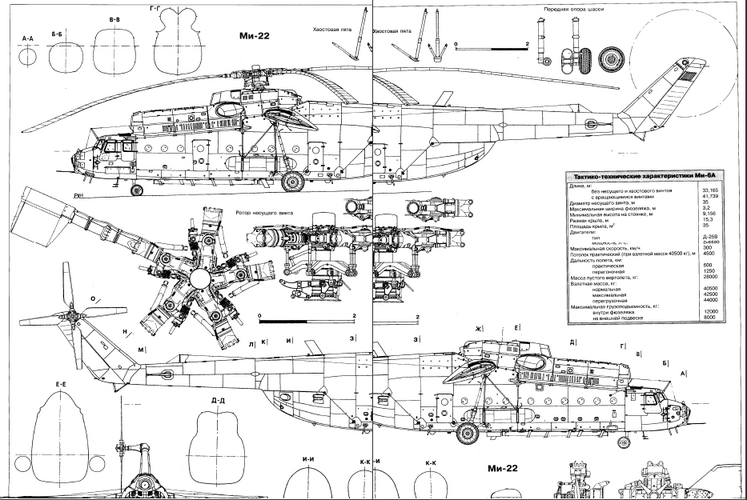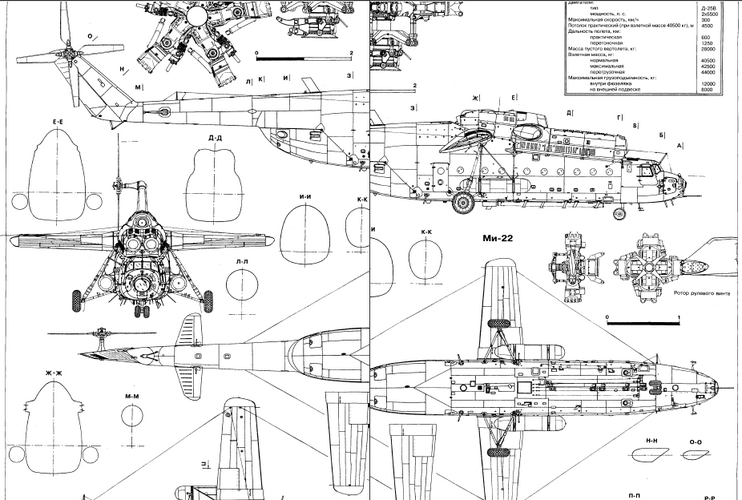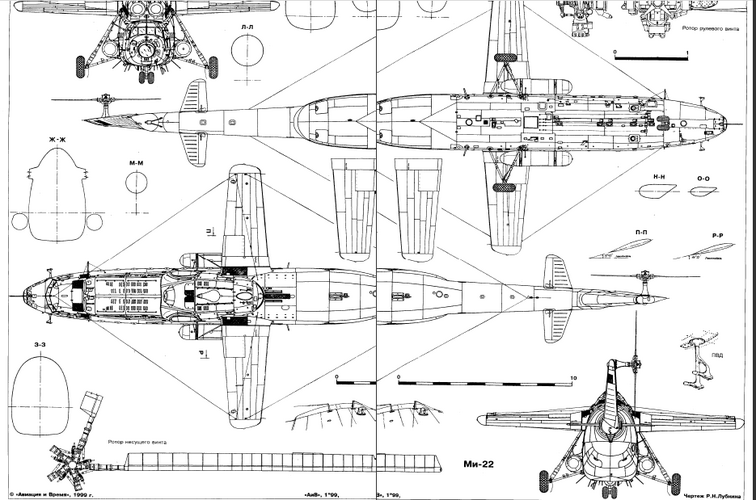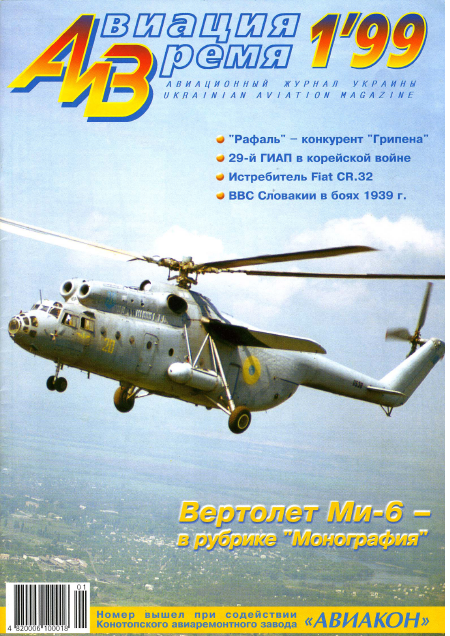You are using an out of date browser. It may not display this or other websites correctly.
You should upgrade or use an alternative browser.
You should upgrade or use an alternative browser.
Various Mil Projects
- Thread starter hesham
- Start date
- Joined
- 26 May 2006
- Messages
- 34,810
- Reaction score
- 15,695
mil said:pay attention to the wing
Very nice my dear Mil.
- Joined
- 26 May 2006
- Messages
- 34,810
- Reaction score
- 15,695
hesham said:Strange Info in my files,
the early Mil V-8 Project was a very light helicopter,looks like V-7 in its class,can anyone
confirm ?.
Here is the confirm,it had a 1.5 to 2 ton weight,powered by one AI-24V engine,Projected in
1958,and called V-8,also the V-8A Project was the in same class,but powered by two A-24V
engines and appeared in 1960,after that came anther configuration and weight class for the
prototypes.
http://www.militaryparitet.com/nomen/russia/avia/data/ic_nomenrussiaavia/9/
- Joined
- 7 June 2009
- Messages
- 532
- Reaction score
- 157
hesham said:Here is the confirm,it had a 1.5 to 2 ton weight,powered by one AI-24V engine,Projected in
1958,and called V-8
http://www.militaryparitet.com/nomen/russia/avia/data/ic_nomenrussiaavia/9/
It had 1.5 to 2 ton payload, not weight. Nobody would fit 2500-hp engine to 2-ton helicopter. AI-24V was a helicopter version of the engine which is used on the Antonov An-24/26.
Also, it was not only a project - the very first of all Mi-8s was really built and flown in this configuration, with single AI-24V engine. See attachments.
Attachments
- Joined
- 7 June 2009
- Messages
- 532
- Reaction score
- 157
hesham said:Thank you my dear Redstar,
and I know this prototype of course,but as you see in that site,there was V-8 of 1958 and
V-8A of 1960,they remained a Projects only,and in 1961 appeared this one.
Probably they mean that 1958 project was transport, while the prototype from 1961 was built in passenger version - so they count them as different.
V-8A with two AI-24V engines remained a project, of course. If built, it would be overpowered and consume too much fuel. So the twin-engine version obtained Klimov engines which suited it better. This version was flown in 1962, and was still designated V-8A as a prototype. Unlike the following prototypes and all production Mi-8s, it still had 4-blade rotor inherited from Mi-4.
Attachments
Vasily41
ACCESS: Confidential
- Joined
- 5 August 2019
- Messages
- 90
- Reaction score
- 111
Hello,
Mil Mi-32 flying crane with takeoff weight of 140
tons. Was intended for civil and military use in Siberia.
- http://www.aviastar.org/helicopters_eng/mi-32.php
Mil Mi-32 flying crane with takeoff weight of 140
tons. Was intended for civil and military use in Siberia.
- http://www.aviastar.org/helicopters_eng/mi-32.php
Attachments
Last edited:
- Joined
- 26 May 2006
- Messages
- 34,810
- Reaction score
- 15,695
Nice find dear Vasily,
but as you said,very similar to Yak-60 ?,
but as you said,very similar to Yak-60 ?,
Aubi
ACCESS: Secret
I don't know about the name, but it was an early proposal for heavy helicopter that became V-12. For this, they even acquired a Vertol V-44 Flying Banana to study the behavior of tandem rotors. Then Mil bureau decided that in this configuratio the machine would have too small speed and ceiling and it would be imposibly to fly with two of four rngines damaged. The parallel confuguration was then used instead.
Yak-60 was competitive design for the same requirement.
Photo of various alleged proposals for V-12:
Yak-60 was competitive design for the same requirement.
Photo of various alleged proposals for V-12:
Attachments
Vasily41
ACCESS: Confidential
- Joined
- 5 August 2019
- Messages
- 90
- Reaction score
- 111
I don't know about the name, but it was an early proposal for heavy helicopter that became V-12. For this, they even acquired a Vertol V-44 Flying Banana to study the behavior of tandem rotors. Then Mil bureau decided that in this configuratio the machine would have too small speed and ceiling and it would be imposibly to fly with two of four rngines damaged. The parallel confuguration was then used instead.
Yak-60 was competitive design for the same requirement.
Photo of various alleged proposals for V-12:
I do suppose that the model I attached is the bigger proposal for V-12 in your picture.
- Joined
- 1 April 2006
- Messages
- 11,363
- Reaction score
- 10,147
seems that Gordon never saw BV-347...
Attachments
Aubi
ACCESS: Secret
Connection is that Gordon claimed (under the first picture) tandem-rotor V-12 to be the only tandem helicopter with wings.
- Joined
- 26 May 2006
- Messages
- 34,810
- Reaction score
- 15,695
Is this a real design,Mil Mi-450 ?,with new configuration to Mi.28,maybe
very early design,we know only the last one ?.
very early design,we know only the last one ?.
Attachments
Last edited:
- Joined
- 26 May 2006
- Messages
- 34,810
- Reaction score
- 15,695
Mil Mi.6 variant for seabed survey ? ... http://saadonline.uk/archives/2531I have found mention of an earth resources/oil survey version of the Mil Mi.6 for possible western export through Aviaexport in an old issue of Flight (early 70's i will dig out the issue) iv not noted any illustration of such a development elsewhere tho or possible fitout ?
tequilashooter
ACCESS: Top Secret
- Joined
- 1 January 2021
- Messages
- 699
- Reaction score
- 895

Russia’s upgraded Mi-28NM gunship gets next-generation missile armament
The Mi-28NM attack helicopter’s integration into the single information and reconnaissance digital space on the battlefield boosts the gunship’s combat efficiency, the chief designer stressed
The latest Mi-28NM attack helicopter is capable of interacting with kamikaze drones, the chief designer said.
"The inclusion of kamikaze drones in the gunship’s airborne armament is one of the areas of interaction between Mi-28NMs and UAVs [unmanned aerial vehicles]," Shcherbina said.
Based on this scheme, a Mi-28NM attack helicopter can launch one or several kamikaze drones from its board when it enters the designated area, the chief designed explained.
"Upon detecting enemy targets, the helicopter’s crew issues target acquisition and exercises control of their destruction," Shcherbina specified.
A Mi-28NM gunship can also interact with other types of drones, the chief designer stressed.
"The technical assignment for the R&D work on creating the Mi-28NM combat helicopter stipulates automated interaction with Korsar and Forpost-R medium-range drones both through an army aviation automated command post and directly between the helicopter and the drone," he explained.
"Automated interaction between Mi-28NM helicopters and various reconnaissance drones will help monitor the designated area without entering the enemy’s effective air defenses, provide accurate target acquisition and exercise control of the combat employment of next-generation light multi-purpose missiles in real time, and also re-transmit telephone and telecode messages between interacting helicopters, aircraft, aircraft platforms and ground-based command posts in the designated area of combat operations," the chief designer said.
Question: Are they talking about launching new types of kamikaze drones from rocket pods as in talking about gunship's armament? And are the rocket pods used on the Mi-28nm same length and diameter size as the ones used on ka-52 and if so the ka-52 can carry 6 pods that have 25 tubes, so launching 150 kamikaze drones as an option?
- Joined
- 26 May 2006
- Messages
- 34,810
- Reaction score
- 15,695
As I think the second one had a tandem two rotors ?,but needIn my files;
there is anther early Mil project,also called V-12,intended for a medium/
light helicopter,in two versions,single and twin engined forms,appeared
late of 1940s.
confirm.
- Joined
- 26 May 2006
- Messages
- 34,810
- Reaction score
- 15,695

Bangladesh Air Force to acquire Russian Mi-28NE attack helicopters
The Government of Bangladesh has decided to purchase eight Russian Mi-28NE attack helicopters manufactured by Rostvertol PJSC, part of the Russian Helicopters holding, for the country's Air Force....
Bangladesh allegedly buying 8 Mi-28NM.
V-12 concepts, Mi-6 and other, some higher resolution pictures of thous previously posted.
Attachments
-
 IMG_0000.jpg558.8 KB · Views: 165
IMG_0000.jpg558.8 KB · Views: 165 -
 IMG_0001.jpg711.1 KB · Views: 165
IMG_0001.jpg711.1 KB · Views: 165 -
 IMG_0002.jpg450.4 KB · Views: 163
IMG_0002.jpg450.4 KB · Views: 163 -
 IMG_0003.jpg1,023.2 KB · Views: 156
IMG_0003.jpg1,023.2 KB · Views: 156 -
 IMG_0004.jpg243.9 KB · Views: 152
IMG_0004.jpg243.9 KB · Views: 152 -
 IMG_0005.jpg559.1 KB · Views: 146
IMG_0005.jpg559.1 KB · Views: 146 -
 IMG_0006.jpg311.4 KB · Views: 137
IMG_0006.jpg311.4 KB · Views: 137 -
 IMG_0007.jpg141.4 KB · Views: 148
IMG_0007.jpg141.4 KB · Views: 148 -
 IMG_0008.jpg313.8 KB · Views: 154
IMG_0008.jpg313.8 KB · Views: 154 -
 IMG_0010.jpg864.3 KB · Views: 154
IMG_0010.jpg864.3 KB · Views: 154 -
 IMG_00021.jpg218.6 KB · Views: 153
IMG_00021.jpg218.6 KB · Views: 153 -
 IMG_00141.jpg220.1 KB · Views: 145
IMG_00141.jpg220.1 KB · Views: 145 -
 IMG_00142.jpg421.7 KB · Views: 172
IMG_00142.jpg421.7 KB · Views: 172
F.L.
ACCESS: Top Secret
The MiL Project 280, a design of what will later become the Mi-28. "Havoc" :


- Even at the design stage, designers at the Mil Design Bureau considered several variants of a combat helicopter, including those without a cargo compartment. Shortly after work began on the Mi-24, a complete combat helicopter model was built as part of the "Product 280" design in 1970, which was a variant of the Mi-24 without a cargo cabin and with reinforced armament.
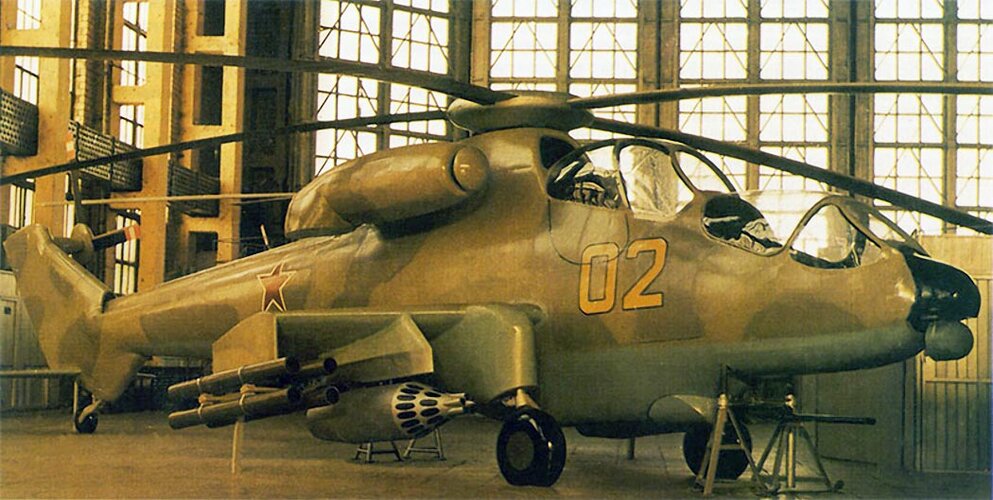
- However, the other variant was the transverse twin-screw helicopter version. According to preliminary calculations, under the wing with a large extension, it was possible to place a combat load about twice that of the Mi-24.
This system offered some advantages over the conventional helicopter, but a significant increase in payload could only be achieved with take-off. In addition, the weight and size of the helicopter increased significantly, as did its vulnerability, which was ultimately deemed unacceptable. Also considered various options for the high-speed attack helicopter, with a fixed main propeller and an additional thrust propeller.
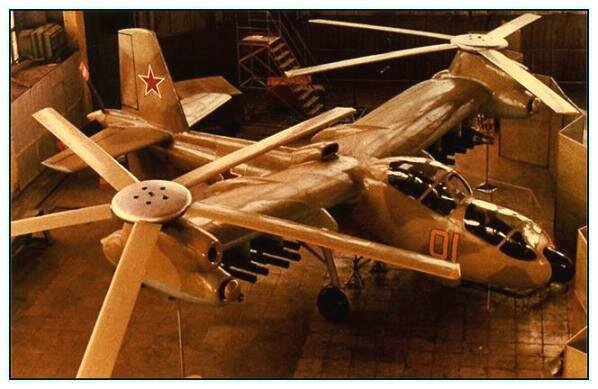
Last edited:
FighterJock
ACCESS: Above Top Secret
- Joined
- 29 October 2007
- Messages
- 5,575
- Reaction score
- 5,890
Is there anymore information about the second helicopter F.L.? It looks a lot like the Hind in parts but is sort of a half way house between the two helicopters.
FighterJock
ACCESS: Above Top Secret
- Joined
- 29 October 2007
- Messages
- 5,575
- Reaction score
- 5,890
Thanks yasotay, the second picture has elements of the Hind behind it. I can see why the Mil designers dropped it and developed the Mi-28 instead.
F.L.
ACCESS: Top Secret
Here :Is there anymore information about the second helicopter F.L.? It looks a lot like the Hind in parts but is sort of a half way house between the two helicopters.
Last edited:
FighterJock
ACCESS: Above Top Secret
- Joined
- 29 October 2007
- Messages
- 5,575
- Reaction score
- 5,890
Thanks F.L., that link answers a lot of questions that I had.
Similar threads
-
-
-
-
-
New naval helicopter from Mil, ca. 1979 - early 1980s
- Started by famvburg
- Replies: 2












































